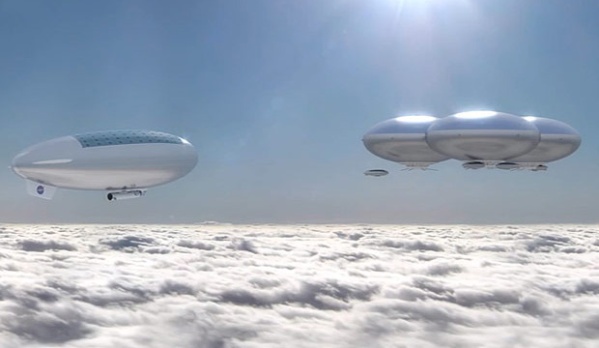NASA, SpaceX, Mars One… all (and others) are actively working on plans to send humans to the surface of Mars at some time within the next few decades. And while the first human exploration of the Red Planet will be a truly momentous and historic event in whatever fashion it ends up being – it will involve the first steps people make on another planet – getting humans safely to the surface of Mars and back will certainly not be a simple task… we still have yet to venture farther than our own Moon, after all.
To help develop the technologies needed and work out the logistics of traveling to Mars, NASA is proposing an Asteroid Redirect Mission (ARM) that would be sort of a “midpoint” in human spaceflight beyond Earth. The exact details of ARM won’t be nailed down until next year (2015) but in essence it will involve getting a small asteroid or a piece thereof into orbit around the Moon, where it can be examined and sampled by astronauts. But while ARM will certainly assist in practicing for advanced deep space missions, some NASA engineers are suggesting that we could do better, actually putting humans if not on at least above another planet with airships soaring the skies of Venus.
Scientists from NASA Langley Research Center in Hampton, VA want to get a better idea about conditions on our nearest planetary neighbor Venus, so they have come up with HAVOC – High Altitude Venus Operational Concept, a lighter-than-air vehicle that would send two astronauts on a 30-day mission to explore the planet’s dense, corrosive atmosphere.
The video above shows part of the multi-phase campaign to explore – and potentially settle – Venus.

The size of the airship is based on having enough lifting gas (e.g., helium) to support the weight of the astronauts’ habitat and ascent vehicle in Venus’ thick atmosphere. Once the airship reached a target altitude of 50 km (31 miles) it would be able to keep itself aloft without the need of propellers or jets.
At such an altitude Venus would be much more hospitable for humans than ground level on Mars. Evan Ackerman writes in an article for IEEE Spectrum: At 50 kilometers above its surface, Venus offers one atmosphere of pressure and only slightly lower gravity than Earth. Mars, in comparison, has a “sea level” atmospheric pressure of less than a hundredth of Earth’s, and gravity just over a third Earth normal. The temperature at 50 km on Venus is around 75 °C, which is a mere 17 degrees hotter than the highest temperature recorded on Earth. It averages -63 °C on Mars, and while neither extreme would be pleasant for an unprotected human, both are manageable.
In addition Venus offers much more protection from solar radiation than Mars. Even in its upper atmosphere, the levels of radiation received by a human would be “about the same as if you were in Canada,” according to Dale Arney from the Space Mission Analysis Branch at NASA Langley. But the solar energy available would be much more than Mars – 240 percent more, in fact.

According to engineers from Langley, before the mission in the video occurred there would be similar robotic missions to test the technologies and better understand the atmosphere. Eventually a short duration human mission would allow us to gain experience having humans live at another world, with the hope that it would someday be possible to live in the atmosphere permanently (hinted at in the closing shot of the video).
While it may not ever be feasible for humans to explore the surface of Venus itself, with its searing temperatures and crushing air pressure, its skies may very well be quite a friendly place to fly.
Read more about the HAVOC mission here.
Video credit and information sources: NASA Langley Research Center. HT to io9 and IEEESpectrum.
great article!
I think that America make every day huge strides in all areas!
LikeLiked by 1 person
At the very least it’s good that people are thinking seriously about these ideas!
LikeLike
Reblogged this on Space Apogee and commented:
We Are Human This World is Our Frontier!
LikeLike
Science fiction ?? No, the future… may be !!
Jeff Barani from Vence (France)
LikeLiked by 1 person
At 50 km up you’re right in the cloud layer – and those clouds are composed of sulphuric acid. Not so pleasant.
LikeLike
I find your comparison of putting humans on Venus vs Mars to be very interesting! I’ve read that some scientists have found that life on Saturn’s moon Titan, may be feasible. I wonder, what’s your opinion on that?
LikeLike
First they faked Moon landings, then there was Venera-Shit, And now all this NASAs Mars -and, whatever bullshit which is totally big joke! How long they’ll got funds from the government to continue this vague cheating? NASA is the most biggest tax-funded joke-factory in the whole world.
LikeLike